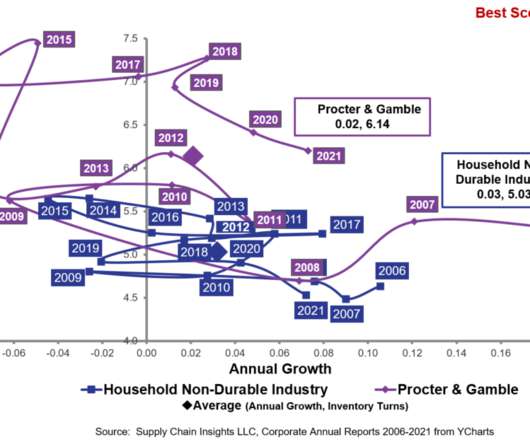Measuring Up?
Supply Chain Shaman
MARCH 28, 2016
To help, in this post, we provide you with some insights for the period of 2006-2015. The supply chain is a complex system with finite, and non-linear relationships between supply chain metrics that drive balance sheet results. We find that companies can improve one, but not two of the metrics. A Look at History. Resiliency.




























Let's personalize your content